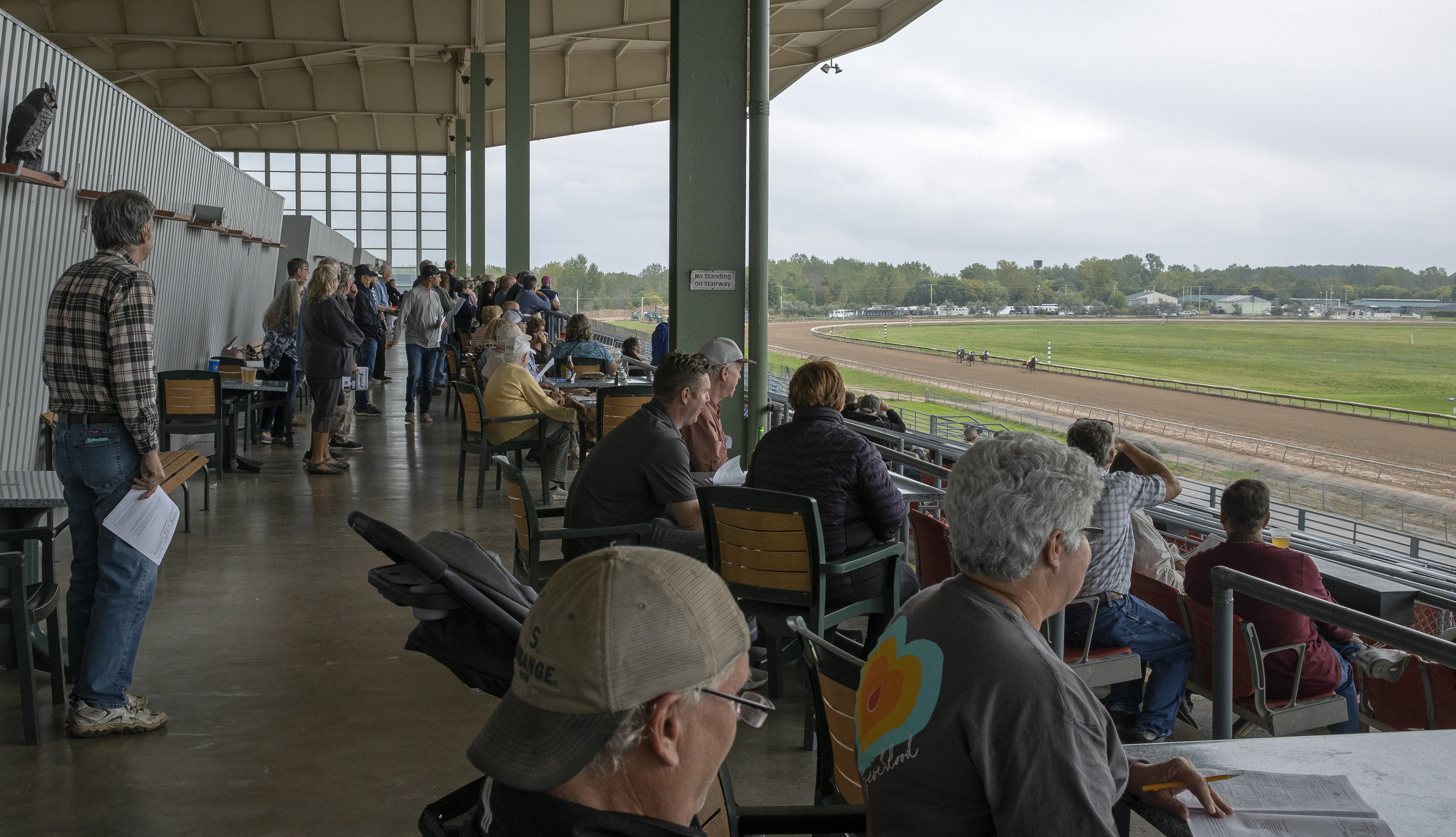
Barbara D. Livingston
Courtesy Daily Racing Form
Total handle and average handle per race during the recently concluded Finger Lakes meet in upstate New York were both up by approximately 20 percent compared to last year’s wagering numbers, according to figures distributed by the track. This comes at a time when many top-tier tracks are struggling to maintain their betting numbers.
Total handle for 88 days of racing this year was up 18.7 percent, to $120.54 million, according to the figures. The number of races held during the meet declined 2.9 percent, and average wagering per race jumped 21.4 percent, from $139,014 to $168,825. The average per-race handle nationwide through October this year has been $362,133.
This was the second straight year that Finger Lakes posted double-digit gains in total handle. Last year, total handle was up 16.5 percent, despite the track running one less race day and 25 fewer races than during the 2021 season.
Finger Lakes is the second mid-tier track in 2023 to post substantial gains in handle during a year when national handle through October has so far declined 4.7 percent on a 4.8 percent decline in the number of races held. Earlier this month, Horseshoe Indianapolis in Shelbyville, Ind., posted a total handle increase of 23.6 percent and a per-race handle jump of 21.3 percent, to $259,908.
Like Horseshoe, Finger Lakes maintained an identical schedule to last year, running three days a week, Monday through Wednesday. The track’s field size was up slightly, from 6.78 horses per race last year to 6.88 horses per race this year, not a particularly strong number in either instance.
In a release, Chris Riegle, the president and general manager of the racing operations at Finger Lakes, said that a promotion this year offering free Equibase programs online contributed to the handle increase. He also said that promotions “to help increase awareness” of the Finger Lakes product in conjunction with Daily Racing Form drove handle gains.
Last year, Finger Lakes pared its wagering menu to attract more betting to fewer pools, leading to higher pool totals and interest from computerized account-wagering programs. The track also eliminated its jackpot-style pick six and went back to the standard pick six format.
This year, the track also had far less competition on Mondays, with Monmouth Park in New Jersey, Laurel Park in Maryland, and Colonial Downs in Virginia dropping that weekday from their schedules.
The only downside to the meet was that total purse distribution declined approximately $440,000, to $14.44 million, in small part due to the inability of the track to fill a $75,000 race, the New York Oaks, which was never held despite being rescheduled several times. Riegle said in the release that the track had a substantial underpayment during the meet and that purses will likely be boosted across-the-board next year.
The gains at the two mid-tier tracks are puzzling due to a general weakness this year in horse-race betting, especially at major tracks. While tracks on the Kentucky circuit generally continue to post strong handle due to massive purse increases, other marquee meets have posted significant declines this year. Handle at Del Mar’s summer meet plunged 10.9 percent; handle at the rain-soaked Saratoga summer meet dropped 9.0 percent.
Officials at Horseshoe had credited field size of approximately eight horses per race and a 19.2 percent jump in the number of turf races held at the track for their own outsized gains, along with several tweaks to the condition book. Horseshoe ran on a Monday through Thursday daytime schedule for most of its meet, though it added Saturday cards during the summer.
Notably, Eric Halstrom, Horseshoe’s general manager, said at the close of the meet that the track will likely pare some of its Saturday dates from the schedule next year because the track’s wagering totals are much higher on weekdays, when it does not face intense competition from other racing signals in the simulcast market – or from other major sports.
Since a 2018 Supreme Court decision allowing states to legalize sports betting, 37 states have authorized wagering on sports, which typically hold weekday games at night but dominate the television landscape from noon to midnight on weekends, especially during football season.
















